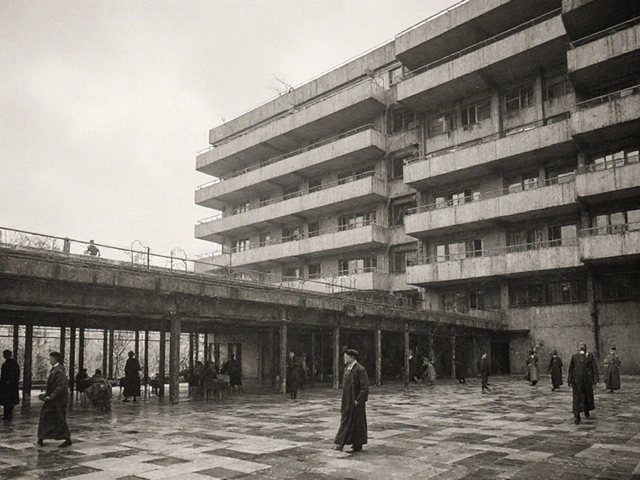Building a New Vision: The Philosophy of Constructivist Architecture
I was sipping a cup of hot cocoa on a crisp morning when it hit me - constructivist architecture is not just a style, it's a philosophy. Picture this: I'm on my porch, Baxter my Golden Retriever at my feet, and Darcy the Maine Coon purring in the shadows. The birds are sing-songy, the kids are in school (Bless their teachers; Laurel can't get enough of math while Tristan has an ironclad obsession with dinosaurs). Between steaming gulps of cocoa, there's me, finger-flying across my tablet, consumed with the power and possibilities of constructivist architectural design.
It's a revolutionary approach to thinking about space that transcends conventional ideas. A constructivist structure doesn't just exist; it interacts. No questions unanswered, every visual detail a statement, a note in the symphony of lines and geometric nuances. I'd go so far as to call it architectural jazz. Quirky, flexible, in the moment, spinning ordinary meaning in the blender of creativity. It's not every day you fall in love with shapes, but give constructivism a date and who knows what might happen?
The Magic Canvas: Reinventing Structures with Constructivist Principles
So what does constructivism mean in architecture exactly? This style resonates with experimentation for it embraces unconventional geometrical forms, intersecting structures and a lot of imagination. It originated in the early 20th century, with its roots in Soviet Russia, where it served as an expression of utopian idealism. However, in the modern context, constructivist architecture often represents an ongoing exploration of form, space, and structure. Truly, there's never a dull moment with its bold, show-stopping character.
You see, every constructivist building is like a masterpiece painting. Just as a snaking yellow in a Van Gogh compels emotive resonance, so does a jutting, asymmetric component of a constructivist structure demand your attention. It sings, it dances, it changes according to your perspective, it sparks conversations and most importantly, it inspires a kaleidoscopic view of the world around.
Pioneers At Work: Key Figures and Iconic Creations in Constructivist Architecture
Every movement has its innovators, and here, the trio to remember are Yakov Chernikhov, Konstantin Melnikov, and Ilya Golosov. Ushering in this new architectural dialect, their works are bold signatures of the philosophy. Their creations echo the essence, some even considered controversial for their daring approaches in age-old contexts.
Now, one cannot mention constructivist architecture without highlighting the most iconic embodiment of this style, the Narkomfin Building, a constructivist apartment block in Moscow. With collective facilities and an interconnected design, it's a poster child for this style's principles interweaving aesthetics and functionality. Designed by Ginzburg and Milinis, it stands as an enigma, a classic paradox of its time and now, a testament to architectural innovation and vision.
Constructing the Future: Technological Innovations and the Emergence of Neo-Constructivism
Flash to the future. The constructivist spirit lives on, breathing life into concrete, steel, and beyond. The incorporation of cutting-edge technologies and sustainable practices rounds off the edges of the constructivist structures, reshaping them into adaptable habitats. These are not serene watercolors but radical pastel graffiti. Neo-constructivism, they call it, a smooth combination of classic inspiration and advanced technology.
From Revit to 3Ds Max, digital tools play an architect's best ally in making these creative imaginings a reality. It’s like having Bob the Builder on speed dial, screeching in any time you fancy a bit of real-world testing and experimental aesthetics. The end result? A canvas stretched across the skyline, a mesh of realities and possibilities, and the thrill of stepping into a space that's far from ordinary.
A taste of constructivist architecture is like a taste of perfectly baked apple pie: deliciously layered, many-faceted, and always leaving you wanting more. Every time I sit down with my architectural software and start spinning my own designs, you bet I’m inspired by the audacity of this groundbreaking style. After all, why should architecture ever be boring, stretching out like a laborious yawn when it could splash across the senses like a burst of citrus in a delicious key lime pie? Constructivist architecture asks us to dare, to dream, to move beyond the linear towards something daringly different. And you know what? I'm absolutely ready to take up its call to arms, cup of cocoa in hand.





